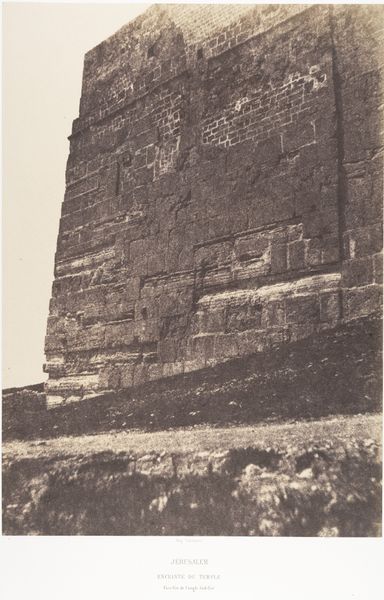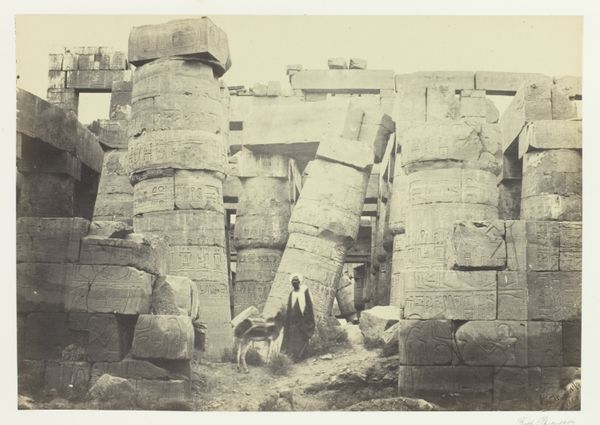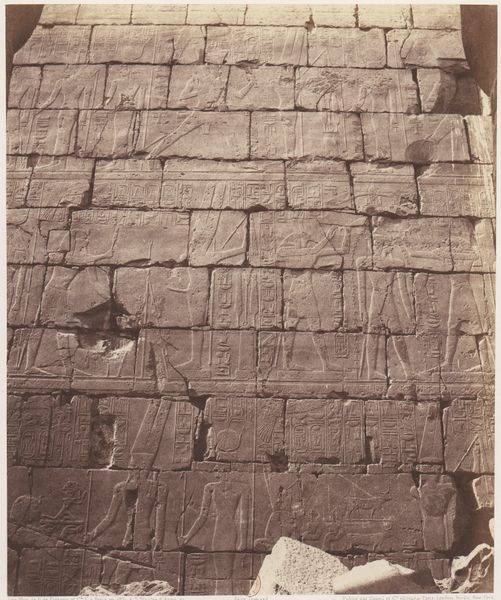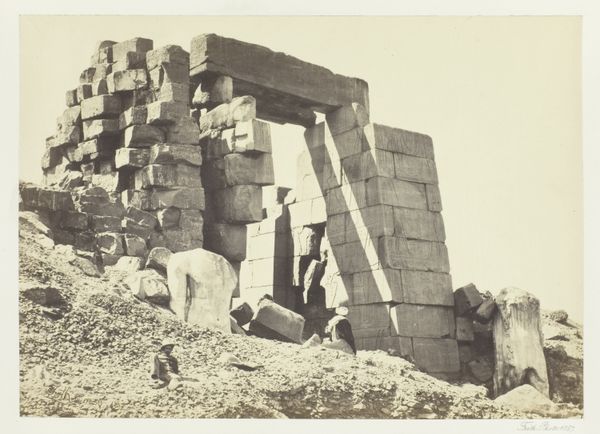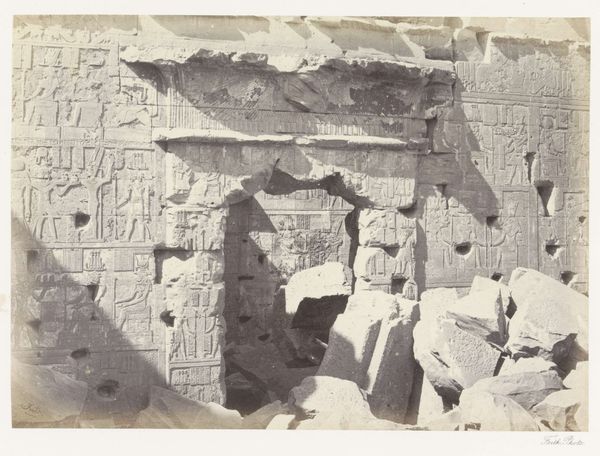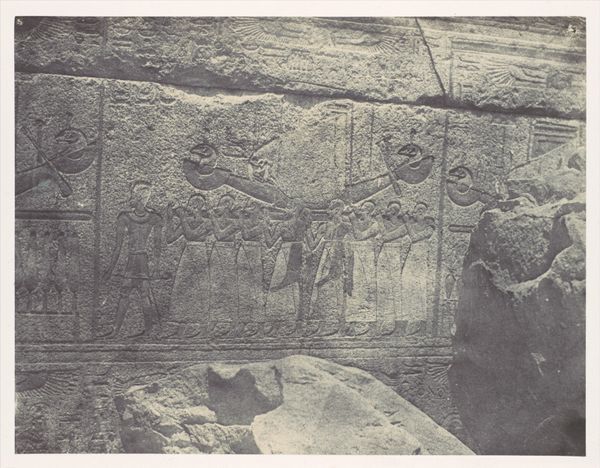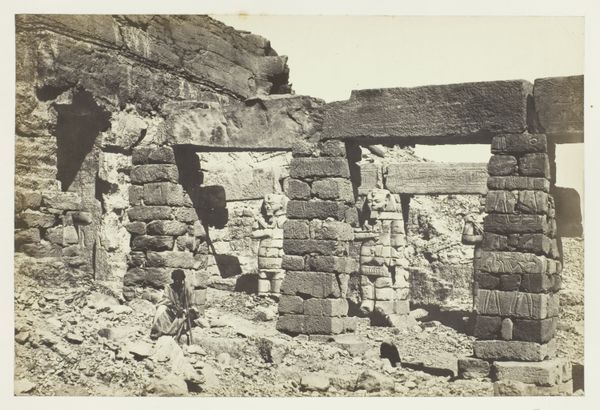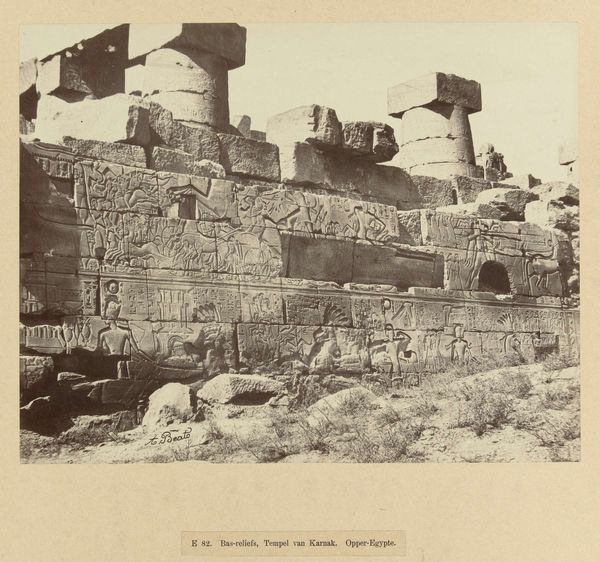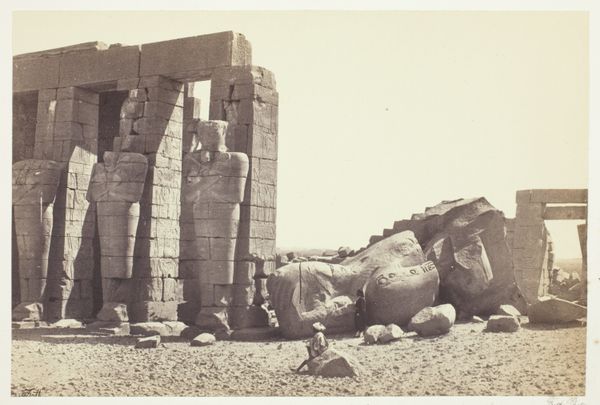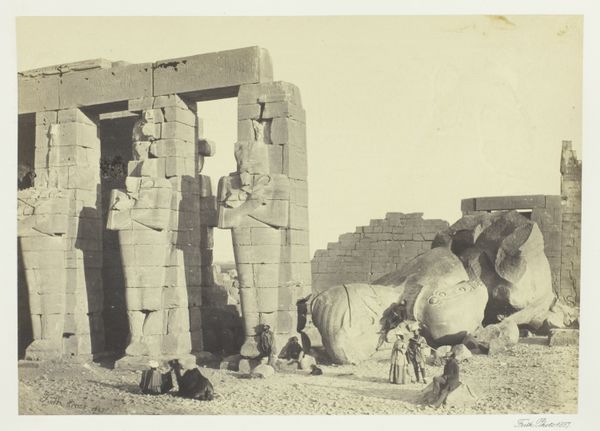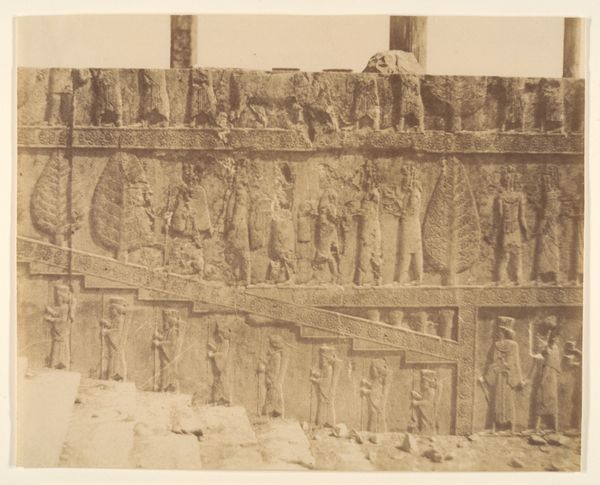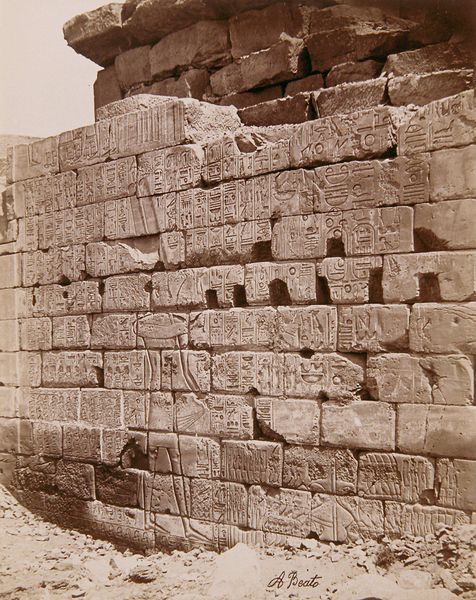
Karnak (Thèbes), Palais - Salle Hypostyle - Décoration de la Paroi Intérieure au Point M 1851 - 1852
0:00
0:00
carving, photography, albumen-print
#
carving
#
landscape
#
ancient-egyptian-art
#
photography
#
ancient-mediterranean
#
albumen-print
Dimensions: 23.3 x 30.5 cm. (9 3/16 x 12 in.)
Copyright: Public Domain
Curator: This albumen print captures a section of the interior wall of the Hypostyle Hall at Karnak in Thebes, documenting a bygone era in Egypt, as recorded by Félix Teynard between 1851 and 1852. What strikes you first about this image? Editor: The weight. There’s something overwhelmingly imposing about the scale and texture of this wall, a stark reminder of the power structures embedded in its creation. The photograph's monochrome tonality amplifies that sense of timeless, immutable dominance, no? Curator: Absolutely. Look at the detail Teynard captures despite the limitations of early photography. The hieroglyphs practically leap off the wall; each figure tells a story. They offer more than just narrative though; these carefully chiseled symbols also function as potent signs of the divine, maintaining cultural continuity. What narratives do you feel emanate most strongly? Editor: For me, it’s about questioning the narrative of permanence these images promote. Think about who was likely commissioned, who had a hand in carving it. There is that aspect of resistance – both subtle and blatant that surfaces throughout ancient egyptian culture from the marginalized and enslaved— and its not really captured in the wall itself. Curator: It's true that resistance may exist largely unrecorded. However, that does not lessen the wall's capacity to offer some historical narratives. Consider the enduring influence of these images. This photo by Teynard provides a link back to a sacred place. Editor: Of course. Photography democratizes access. People can interact from across distance with previously sequestered art; to gaze upon an imperial project centuries after it was first constructed. Still, lets ask whether this photography promotes or unravels such dominance. Who controls and mediates this record becomes pivotal to the discourse, as always. Curator: I think its hard to disentangle the complicated social and economic networks responsible for this artefact. Both forces are always working to either help a work last, and forces seeking its decay and erasure. Its a great testament to these pieces to survive, be discussed, researched and analyzed now. Editor: I fully agree! Engaging with these images forces us to address power, memory, and representation directly. The albumen print captures not just a wall but also echoes the social context it’s always existing within, and will hopefully never fail to address in perpetuity.
Comments
No comments
Be the first to comment and join the conversation on the ultimate creative platform.

